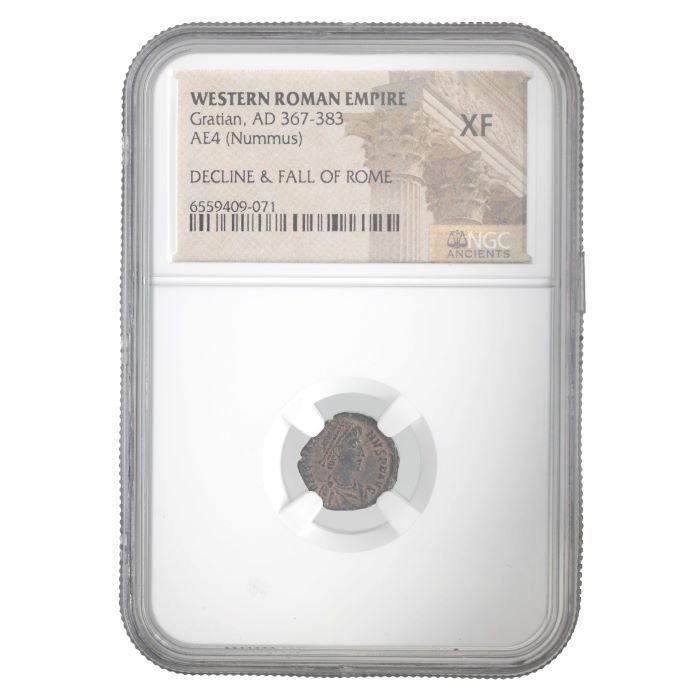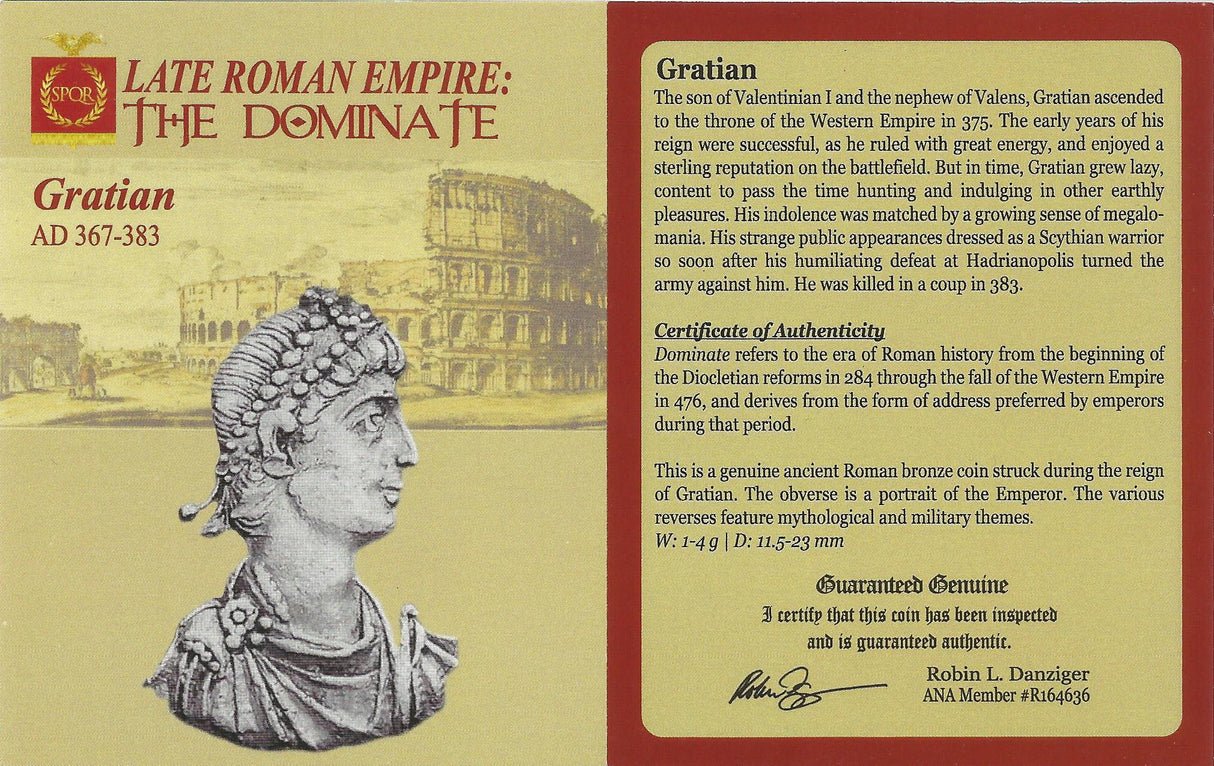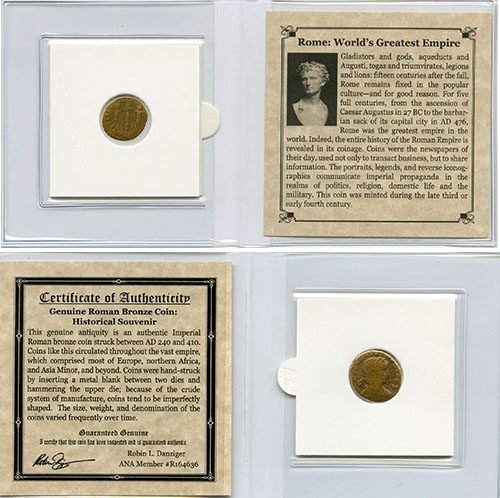Roman Ae Of Gratian (AD 367-383) NGC AE4
Coins in images are examples only.
Roman Ae Of Gratian (AD 367-383) NGC. The son of Valentinian I and the nephew of Valens, Gratian ascended to the throne of the Western Empire in 375. The early years of his reign were successful, as he ruled with great energy, and enjoyed a sterling reputation on the battlefield.
Coins in images are examples only.
Roman Ae Of Gratian (AD 367-383) NGC. The son of Valentinian I and the nephew of Valens, Gratian ascended to the throne of the Western Empire in 375. The early years of his reign were successful, as he ruled with great energy, and enjoyed a sterling reputation on the battlefield.
Coins in images are examples only.
Roman Ae Of Gratian (AD 367-383) NGC. The son of Valentinian I and the nephew of Valens, Gratian ascended to the throne of the Western Empire in 375. The early years of his reign were successful, as he ruled with great energy, and enjoyed a sterling reputation on the battlefield.






























